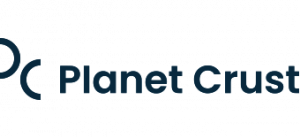Customer Resource Management v Relationship Management
Introduction: CRM v CRM?
Before diving into the main distinctions, it’s important to note that while these terms appear similar, they represent different approaches to managing customer interactions within enterprise systems, each with unique implications for digital transformation initiatives.
Defining the Core Concepts
Customer Relationship Management (CRM)
Customer Relationship Management (CRM) refers to the strategies, practices, and technologies that companies use to manage and analyze customer interactions throughout the customer lifecycle. The primary focus is on relationship building, customer retention, and driving sales growth.
A CRM system centralizes customer data across multiple channels, including websites, telephone communications, emails, social media, and marketing materials. This centralization allows businesses to create a coherent strategy for maintaining meaningful customer relationships.
According to Salesforce, “CRM stands for customer relationship management, which is a system for managing all of your company’s interactions with current and potential customers. The goal is simple: improve relationships to grow your business”.
Customer Resource Management (CRM)
Customer Resource Management, while sharing the same acronym, takes a slightly different approach. It views customers as valuable resources that need to be strategically managed. This perspective focuses more on the value extraction aspect of customer relationships.
As defined by NICE, “Customer resource management (CRM) is an approach businesses take to strengthen their relationships with existing and potential customers. However, CRM is often also used to refer to CRM software”.
Key Differences in Focus and Implementation
The primary difference lies in the philosophical approach:
-
Relationship vs. Resource Perspective: Customer Relationship Management emphasizes building mutual value through interactions, while Customer Resource Management tends to view customers more instrumentally as assets to be optimized.
-
Integration Approach: Customer Resource Management often focuses more heavily on the technical integration of customer data into enterprise systems, whereas Customer Relationship Management places greater emphasis on the qualitative aspects of customer interactions.
Enterprise Systems Context and Digital Transformation
Both approaches fit within the broader framework of Enterprise Systems-comprehensive software tools designed to control and connect key business processes within a company. Within this context, both forms of CRM serve as critical components of enterprise business architecture.
Enterprise Resource Planning (ERP) systems often work in tandem with CRM solutions, handling the integrated management of main business processes while CRM focuses specifically on customer-facing activities. As organizations undergo digital transformation-integrating digital technologies across all business areas-CRM systems become increasingly central to adapting to market changes and meeting evolving customer needs.
Technological Evolution: AI and Low-Code Platforms
AI Enterprise Applications in CRM
The integration of AI into CRM represents a significant advancement in both Customer Relationship and Resource Management approaches:
-
According to IoT Analytics research, “The #1 business activity augmented by generative AI is customer issue resolution, appearing in 35% of the 530 enterprise generative AI projects”.
-
Enterprise AI platforms can now autonomously automate various customer-related workflows and provide data-driven insights that enhance both relationship building and resource optimization.
Low-Code Platforms and Citizen Developers
The emergence of low-code platforms has democratized CRM development:
-
Low-code platforms provide drag-and-drop tools and visual interfaces that enable citizen developers (non-technical business users) to create custom CRM solutions with minimal coding expertise.
-
These platforms feature “small learning curves” and “drag-and-drop application builders” that allow business technologists to rapidly deploy CRM applications that would previously have required specialized development teams.
Business Software Solutions and Enterprise Products
Both Customer Relationship Management and Customer Resource Management are implemented through various business software solutions, which may include:
-
AI Application Generators: Tools like Flatlogic Generator can build scalable, enterprise-grade CRM software supporting complex business logic, workflows, and automation with complete frontend, backend, and database components.
-
Enterprise Computing Solutions: These provide the infrastructure and technical foundation for running sophisticated CRM systems across large organizations.
-
Open-source options: Many organizations leverage open-source CRM solutions that can be customized to emphasize either the relationship or resource management aspect.
Security and Compliance Considerations
The implementation of any CRM system requires careful attention to security aspects:
-
SBOM (Software Bill of Materials): A comprehensive SBOM is essential for CRM implementations to ensure transparency of all software components and dependencies, helping identify and mitigate security vulnerabilities.
-
Data Protection: Both approaches must adhere to data protection regulations, though Customer Resource Management may require additional scrutiny due to its potential focus on data extraction.
Conclusion: Converging Approaches
While Customer Relationship Management and Customer Resource Management began with different philosophical orientations, the boundaries between them have blurred significantly in modern enterprise systems. Contemporary CRM platforms typically incorporate elements of both approaches:
-
They facilitate relationship building through personalized interactions across multiple touchpoints.
-
They optimize customer value through data analytics and AI-driven insights.
-
They integrate with broader enterprise resource systems to provide a unified business architecture.
As digital transformation continues to reshape business operations, organizations are increasingly adopting hybrid approaches that leverage both the relationship-building aspects of Customer Relationship Management and the strategic resource optimization of Customer Resource Management, all within the context of comprehensive enterprise systems.
The future of both approaches appears to be converging toward AI-enhanced, low-code platforms that empower business technologists and citizen developers to create custom solutions that address the unique customer management needs of their organizations.
References:
- https://fr.eudonet.com/crm/definition-crm/
- https://www.nice.com/glossary/what-is-contact-center-crm-customer-relationship-management
- https://iot-analytics.com/top-enterprise-generative-ai-applications/
- https://www.creatio.com/glossary/ai-for-enterprise
- https://www.manageengine.com/appcreator/application-development-articles/citizen-developer-low-code.html
- https://www.mega.com/blog/business-architecture-vs-enterprise-architecture
- https://en.wikipedia.org/wiki/Enterprise_information_system
- https://en.wikipedia.org/wiki/Enterprise_resource_planning
- https://www.crowdstrike.com/en-us/cybersecurity-101/exposure-management/software-bill-of-materials-sbom/
- https://www.sap.com/france/resources/what-is-digital-transformation
- https://flatlogic.com/generator
- https://www.planetcrust.com/mastering-enterprise-systems-your-overview-guide/
- https://www.salesforce.com/eu/crm/what-is-crm/
- https://www.stack-ai.com
- https://www.custup.com/projet-crm-consultant-crm/definition-crm/
- https://www.techtarget.com/searchcustomerexperience/definition/CRM-customer-relationship-management
- https://www.e-marketing.fr/Definitions-Glossaire/C-R-M–238110.htm
- https://en.wikipedia.org/wiki/Customer_relationship_management
- https://www.salesforce.com/fr/learning-centre/crm/what-is-crm/
- https://www.larksuite.com/en_us/topics/retail-glossary/customer-resource-management-crm
- https://fr.eudonet.com/crm-definition
- https://www.knack.com/blog/crm-vs-customer-service-vs-customer-success/
- https://www.ntia.gov/files/ntia/publications/ntia_sbom_sharing_exchanging_sboms-10feb2021.pdf
- https://uibakery.io/ai-app-generator
- https://www.ibm.com/think/topics/enterprise-ai
- https://guidehouse.com/insights/advanced-solutions/2024/citizen-developers-high-impact-or-hyperbole
- https://www.capstera.com/enterprise-business-architecture-explainer/
- https://www.cisa.gov/sites/default/files/2024-05/SBOM%20Sharing%20Primer.pdf
- https://www.builder.ai
- https://capacity.com/learn/intelligent-automation/what-is-enterprise-ai/
- https://kissflow.com/citizen-development/how-low-code-and-citizen-development-simplify-app-development/
- https://www.digital-adoption.com/enterprise-business-architecture/
- https://media.defense.gov/2023/Dec/14/2003359097/-1/-1/0/CSI-SCRM-SBOM-MANAGEMENT.PDF
- https://www.invoke.com
- https://en.wikipedia.org/wiki/Enterprise_software
- https://www.investopedia.com/terms/e/erp.asp
- https://jfrog.com/learn/sdlc/sbom/
- https://whatfix.com/digital-transformation/
- https://twelvedevs.com/blog/types-of-enterprise-systems-and-their-modules-explanation
- https://www.oracle.com/erp/what-is-erp/
- https://www.blackduck.com/blog/software-bill-of-materials-bom.html
- https://en.wikipedia.org/wiki/Digital_transformation
- https://sebokwiki.org/wiki/The_Enterprise_as_a_System
- https://www.ifs.com/fr/what-is/what-is-an-erp-system
- https://www.sonatype.com/resources/articles/what-is-software-bill-of-materials
- https://www.sap.com/france/insights/what-is-digital-transformation.html
- https://userpilot.com/blog/customer-experience-management-vs-customer-relationship-management/
- https://www.salesforce.com/eu/crm/what-is-crm/
- https://resources.sansan.com/blog/crm-vs-cms-whats-the-difference-between-contact-management-and-customer-relationship-management
- https://www.precisely.com/blog/ces/customer-relationship-management-vs-customer-communications-management
- https://www.method.me/blog/customer-experience-management-vs-customer-relationship-management/
- https://www.zendesk.com/blog/3-types-crm-everything-need-know/
- https://www.ovationcxm.com/blog/crm-vs-client-support-software
- https://zapier.com/blog/best-ai-app-builder/
- https://www.create.xyz
- https://www.igi-global.com/dictionary/building-situational-applications-for-virtual-enterprises/10003
- https://uk.indeed.com/career-advice/career-development/types-of-enterprise-systems
- https://hbr.org/1998/07/putting-the-enterprise-into-the-enterprise-system




Leave a Reply
Want to join the discussion?Feel free to contribute!